Wano Niku Yakiniku, Tanjong Pagar: Fresh-flown Japanese A4 Wagyu at just S$8
Wano Niku Yakiniku. My colleague, Gillian, challenged me to say that name 3 times very fast as we made our way down to Cantonment Road and I was still failing at it when we arrived.
For a moment, I didn’t even realise that we were there. A nondescript whitewashed building with a coffee shop on the ground floor hardly seemed like the place to get fresh prime A4 Wagyu beef that’s been flown directly from Japan. But a signboard assured us we were in the right place.

Yakiniku means ‘grilled meat’ in Japanese and has now come to refer to DIY restaurants where you are served the raw ingredients of your meal, a portable table stove to cook it on, and condiments to accompany the cooked dish.
These restaurants abound in Singapore but few, if any, can boast freshly-flown A4 Wagyu. Wano Niku has been making waves for dealing exclusively in that premium-grade beef and Kumamoto pork. I was intrigued to find out whether the hype was justified.
What I tried
Our first platter was of Karubi (S$8 for 50 grams) and Kainomi.
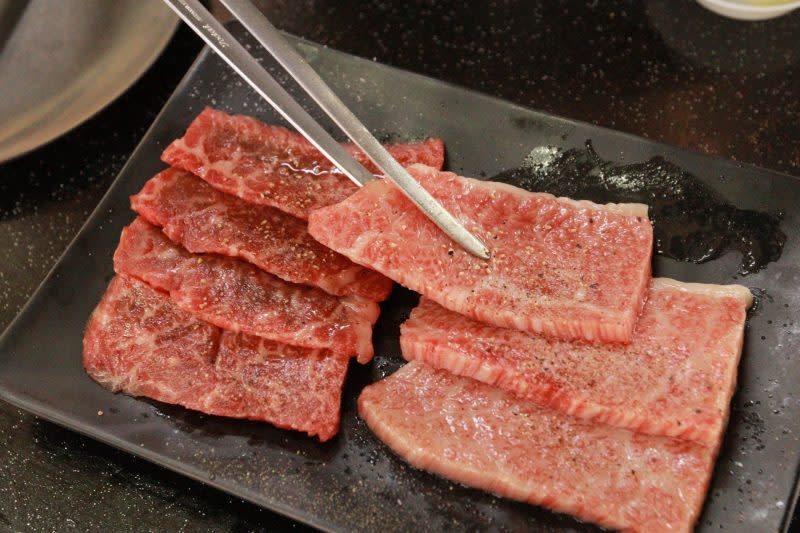
Karubi is a boneless short rib or flanken-cut rib (rib cap). With more marbling than even roast cuts, it is extremely tender and juicy. The 4 slices on our platter proved to be absolutely yummy – so soft and melty in my mouth, a sure giveaway that I was consuming meat with high marbling.

Kainomi is beef belly, which is the meat of the back closest to the tenderloin, giving it the tenderness of both ribs and tenderloin. Gillian and I felt that the thickness was just right and that gave it exactly the right amount of ‘bite’. We did wish that there was more time to savour the exquisite taste before it melted away.
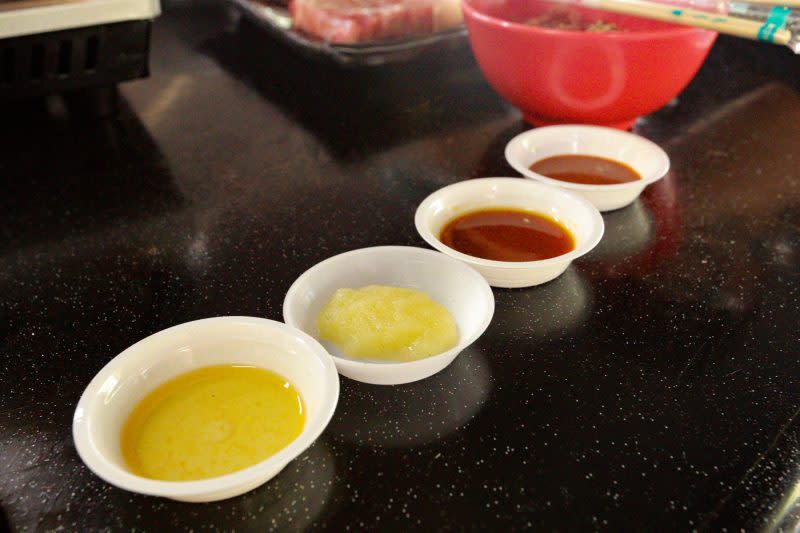
Wano Niku offers 4 different sauces: Yakiniku (the best), minced garlic (a close second), shio tare (pretty average salt seasoning sauce), and spicy sauce (which was too spicy for me). Customers can help themselves to the sauces (kept in squeeze bottles) displayed on the stall’s counter. I loaded up on the Yakiniku.

Wano Niku Bowls
The stall’s signature yakiniku choices are its 3 Wano Niku Bowls (S$8 per bowl). Packed with 100 grams of meat, each bowl is large enough to feed 2 people. The meat is a mix of loin and karubi.

Each of the 3 variants is marinated in its own sauce: the Original in Wano Niku’s signature sauce, the Aka in a special spicy sauce, and Shiro in a salty sauce.
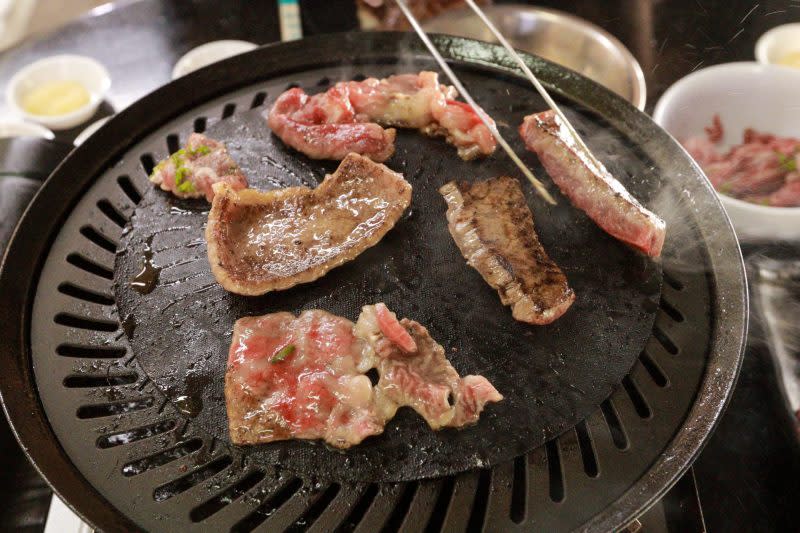
Of the trio, I liked the Aka best. The mixture of grated garlic, onion, and spices gives it a gutsy kick and transforms each morsel into something special. The Original was just too plain for me on its own, but paired well with the dips. The Shiro was the second best, a perfect accompaniment if you love a dose of salt in your meat.
Platter
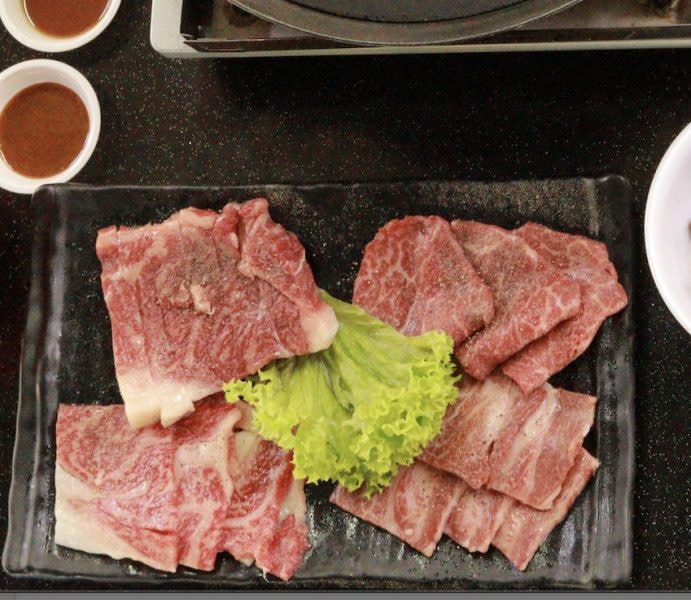
For a limited time, you can get a special Ghib Ojisan (S$50) platter at Wano Niku. The presentation of this spectacular platter is so beautiful for its simplicity— wonderfully red meat with dense white marbling on a black tray.
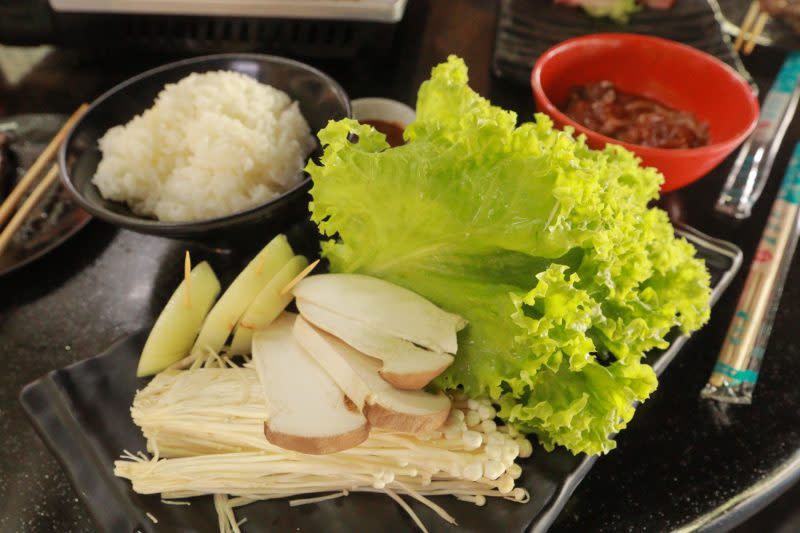
To balance the overdose of meat, we ordered a bowl of Niigata Rice (S$2), which is basically steamed white rice, and a side of Assorted Vege (S$6), which included mushroom, onion and lettuce.

The tray included beef tongue, which was chewy (as you would expect). Of everything that I tried, I found this to be the least appealing and the only one too plain to be eaten on its own. My stamp of approval goes to Wano Niku’s grated garlic sauce because it made even this meat taste good to me.

There is also karubi, which is part of prime rib roast and, I think, the best part. Its sweetness when cooked is a thing of wonder. Gillian loved the bite but was slightly disappointed that it melted away so quickly.
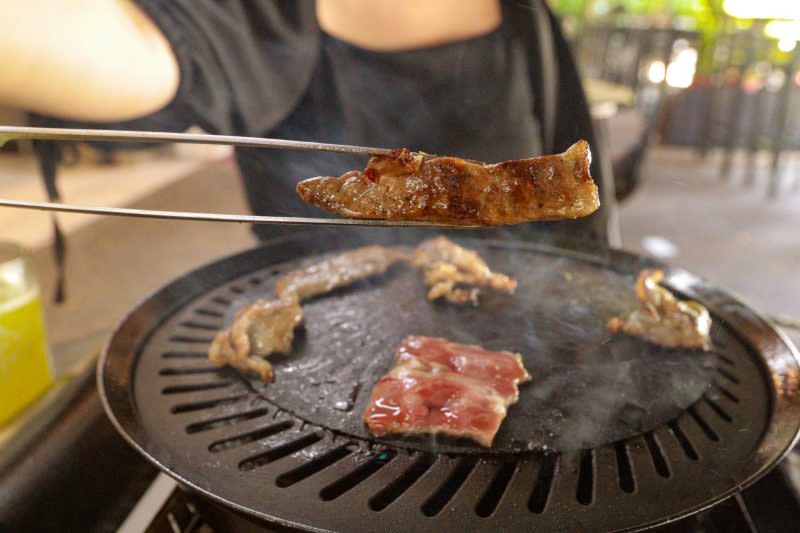
Rounding up the platter are 100 grams of striploin and 100 grams of ribcage. The striploin was thick, a good inch and then some, making it the most substantial cut of the day.

I have paid S$50 just for a steak that size before and, here, I was getting an entire platter. The quality and quantity of cuts here would easily have set us back S$200 at a local restaurant.
Final Thoughts

Musical-sounding name aside, the real wonder of Wano Niku Yakiniku is its incredible pricing. I could gaze for hours at the wonderful marbling of the restaurant-grade meat, and to pay as little as $8 for a dish just blows my mind.
My only complaint is that the location does not match the food. There were actual chickens running about in the carpark. Sure, there are Michelin-starred coffee shops but I prefer an air-conditioned restaurant if I am going to be slaving over a stove (or watching someone else slave over a stove).
I also hope that Wano Niku listens to my pleas and locates some Wagyu cubes before I visit again. I’ll even learn to say their name 3 times very fast for it.
Expected damage: S$8-S$25 per pax
Other articles you might like:
Sushi Katori: Exquisite omakase experience by Chef Ryuta Katori using air-flown Japanese ingredients
The post Wano Niku Yakiniku, Tanjong Pagar: Fresh-flown Japanese A4 Wagyu at just S$8 appeared first on SETHLUI.com.


